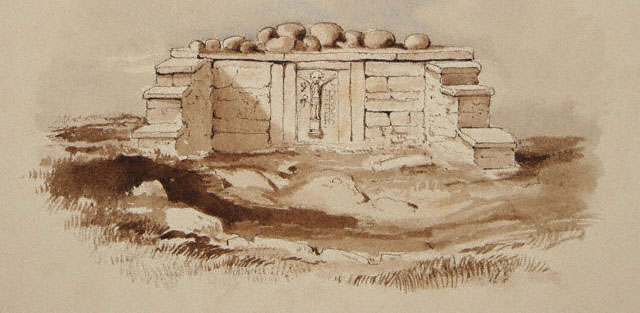
Image: Author
Our arms are waving our lips are apart;
And if any gaze on our rushing band,
We come between him and the deed of his hand,
We come between him and the hope of his heart.
W. B. Yeats, The Hosting of the Sidhe
* * *
Following on from last years folk horror flavoured adventure on the Slopes of Rathcroghan, I thought I’d take the opportunity of the weekend that’s in it to present you with another. The time: a few years ago. The place: an apparently nondescript rural graveyard somewhere in Middle Ireland. The unwitting (mis)adventurer: yours truly.
* * *
It was the first day of a week of archaeo-field survey and I was supposed to be in the far west of Ireland following in the footsteps of a seventh century bishop, seeking out some of the earliest historically attested Christian sites associated with the cult of St. Patrick. Yet, here I was, walking down a grass rutted country lane, searching for a gate that led toward a half-forgotten graveyard. The location wasn’t even on my official list of sites to visit, but I had been nearby and decided to stop off for a quick poke around. During a previous desktop survey, I had noted several interesting archaeo aspects about the place:
- A late medieval church ruin
- A much earlier medieval looking curvilinear shaped graveyard
- A couple of suspiciously prehistoric looking standing stones in hinterlands
- An abandoned holy well – and most of all –
- A strange looking natural feature on a nearby drumlin that my eyes had been drawn to whilst looking at aerial photography.
Truth be told, it was actually a combination of all the above occurring within a placename containing the Old Irish word túaim; i.e. ‘a mound, bank, knap, tump, or hillock’, but more frequently, in placename terms, ‘a mound, tomb, grave or sepulchre‘ (in the sense of Latin tumulus).
This alone would have made anyone’s archaeological antennae stand up on end. But what really sealed the deal for me was the small matter of there being no record whatsoever of anything resembling a prehistoric mound or tomb in the vicinity.
Coupled with that, somewhere in this particular area, my seventh century bishop had made reference to an early church site. Alas, the full (Hiberno-Latin) placename is now illegible in the only surviving manuscript and as a result has never been identified with any certainty. Later medieval vernacular sources do include an Irish placename for the same area however, also unidentified, yet containing a similar letter or two with that of the first example. More importantly, the Irish placename is qualified by the word Sídh.

(Image: Author)
In onomastic terms this descriptor is generally associated with Sídh Mounds, aka Fairy Mounds. Denuded prehistoric tombs, cairns, mounds or tumuli, often situated on lumps, bumps and hills – many of which were later re-imagined and depicted in Irish myth and folklore as being the underground homes of supernatural beings or fairies known as the Áes Síde.
To have all this whirling around together in one place in an almost perfect archaeological, historical, onomastic storm? To be faced with the prospect of a forgotten prehistoric Tumulus, Síde Mound, or Ferta adjacent an early medieval church site? Perhaps even, the very reason for its initial establishment, reflecting Early Irish Christian agency, engagement and renegotiation with an ancestral past? How could anyone resist?
Long story short, that is how I came to be walking down a lane in the nowhere middle of Middle Ireland. On the off chance of catching a whispered echo of long silenced folk memory. Trespassing across time and space. Waking the dead. Looking for the ghost of a grave in an already ancient graveyard. A ‘túaim’ with a view.
What could possibly go wrong?

